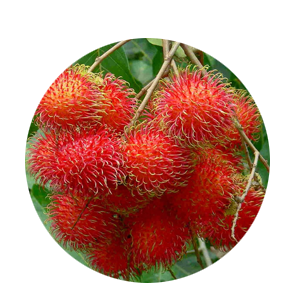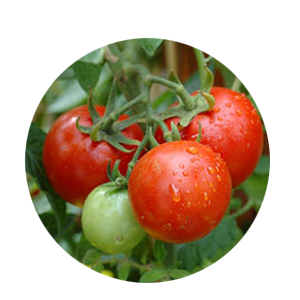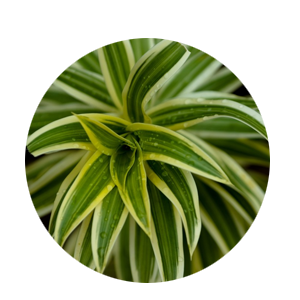Lemon -Acid Lime/Balaji Seedling - (8x10 bag)

Item Description
GENERAL INFORMATION ABOUT A LEMON(Citrus Limon) The lemon, (Citrus limon ) is a species of small evergreen tree in the flowering plant family Rutaceae, native to Asia. The tree\'s ellipsoidal yellow fruit is used for culinary and non-culinary purposes throughout the world, primarily for its juice, which has both culinary and cleaning uses.The pulp and rind are also used in cooking and baking. The juice of the lemon is about 5% to 6% citric acid, which gives a sour taste. The distinctive sour taste of lemon juice makes it a key ingredient in drinks and foods such as lemonade and lemon meringue pie. Lemon juice, rind, and zest are used in a wide variety of foods and drinks. Lemon juice is used to make lemonade, soft drinks, and cocktails. HEALTH BENEFITS OF LEMON Pharmacologically, lemon is primarily important for its vitamin C nutritional value and for its potassium content. Epidemiological studies associate the intake of citrus fruit with a reduction in the risk of various diseases. Antioxidant and anticancer actions are being investigated, and a role in hypocitraturic calcium nephrolithiasis has been suggested. Lemon also shows some antimicrobial activity. Some Health and Medicinal Benefits Lemon 1. It promotes hydration. 2. It’s a good source of vitamin C. 3. It improves your skin quality. 4. It supports weight loss. 5. It aids digestion. 6. It freshens breath. 7. It helps prevent kidney stones 8.It balances to maintain the pH levels in the body 9.Having warm lemon juice early in the morning helps flush out toxins 10.It aids digestion and encourages the production of bile 11.It is also a great source citric acid, potassium, calcium, phosphorus and magnesium 12.It helps prevent the growth and multiplication of pathogenic bacteria that cause infections and diseases 13.It helps reducing pain and inflammation in joints and knees as it dissolves uric acid 14.It helps cure the common cold 15.The potassium content in lemon helps nourish brain and nerve cells 16.It strengthens the liver by providing energy to the liver enzymes when they are too dilute 17.It is of immense benefit to the skin and it prevents the formation of wrinkles and acne 18.It helps maintain the health of the eyes and helps fight against eye problems 19.Aids in the production of digestive juices
Maintanance, Disease Management And Yielding
MAINTANACE OF THE PLANTATION Once a plantation has been established, the work should not be considered finished. It will be necessary, for example, to protect the plantation against weather, fire, insects and fungi, and animals. A variety of cultural treatments also may be required to meet the purpose of the plantation. FERTILIZING For each completed year of growth till 5 years, 20 kg Farm Yard Manure, 100 g urea and 1 kg Superphosphate be applied per plant in two equal split doses in June and December every year. Fifth year onwards application of 40 kg FYM, 400 g N + 200 g P + 400 g K per plant in two split doses in June-July and September-October be applied. In addition, 150 g N be applied per plant 15 days after fruit set. Manures and fertilizers are applied in a circular trench 20-30 cm deep about a meter wide around the periphery of the tree. Manures are thoroughly mixed with soil, and the tree irrigated profusely. WATERING AND WEED CONTROL Young avocado trees should be watered regularly until fully established. In dry western climates, water mature trees deeply at least every one or two weeks. Desert gardeners may have to water more frequently. Mulch the soil around the trees to conserve moisture. Weeding is also very important. Remove all weeds 1.5 meter around the plant. PRUNING AND SHAPE OF TREE In February, reshape plants by thinning out overcrowded branches. ‘Leggy’ plants can be pruned back by up to two-thirds and the tallest branch can be cut back to encourage bushy growth. Throughout the summer, pinch back the tips of the most vigorous growth, using the thumb and forefinger. Mature plants may produce unwanted, fast-growing shoots called ‘water shoots’. Remove these when they appear from the main branches at the bottom or middle of the plant and shorten those arising near the branch tips. Be especially watchful for shoots from below the graft on the main stem, and remove such shoots immediately. PEST & DISEASE FOR EGG FRUIT TREE Every fruit tree has the future potential for disease and insect damage. Factors such as location and weather will play a part in which issues your tree encounters. If available, disease-resistant trees are the best option for easy care; and for all trees, proper maintenance (such as watering, fertilizing, pruning, spraying, weeding, and fall cleanup) can help keep most insects and diseases at bay. HARVESTING YOUR EGG FRUIT TREE Lemons are ready to pick as soon as they are yellow or yellow green in appearance and firm. The fruit will be 2 to 3 inches in size. It’s better to wait until they are the right size and not worry so much about color than to wait for them to be completely yellow. Lemons that are ready to be picked also have a slightly glossy appearance. Lemon picking is better too early than too late. If lemons are greenish-yellow, they will more than likely ripen off of the tree. If they are squishy, you’ve waited too long.
- Propogation Method : Seeds & Bulbs
- Plant Climate : Sub Tropical, Normal, Hot, Cool, Tropical
- Plant Height : 2-3 feet
Related Images
- Botanical Name : Citrus Limon
- Malayalam Name : Cherunarakam
- English Name : Lime
These taste buds let your brain know when something is sour
Planting Instructions
PLANT THE RIGHT TREE AT RIGHT PLACE Growing space both above and below ground should be considered when selecting a tree to plant. Too often allowances are not made for the increased size of the tree when it matures. Most problems can be avoided by selecting the proper tree species for the available planting space. GENERAL TIPS 1. Plant at least 3 meter from main overhead utility wires on street or to your home. 2. Plant at least 3 meter from a building. 3. Plant at leat 1 meter from sidewalks, driveways, patios and fences. 4. Plant at least 6 meter from other large trees. 5. Plant at least 3 meter from small trees. 6. Prioritize your tree planting with the sun’s direction to maximize shade by planting on the southwestern and western sides of your home BASIC PARAMETERS TO PLANT A LEMON TREE 1. Soil : Citrus plants are grown in a wide range of soils ranging from sandy loam or alluvial soils of north India to clay loam or deep clay loam or lateritic/acidic soils in the deccan plateau and north-eastern hills. Citrus orchards flourish well in light soils with good drainage properties. Deep soils with pH range of 5.5 to 7.5 are considered ideal. However, they can also be grown in a pH range of 4.0 to 9.0. High calcium carbonate concentration in feeder root zone may adversely affect the growth . 2. Planting Distance : For Commercial Plantation:- Normal spacing – 6 x 6 m / 5 x 5 m, Plant population – 277/400 per ha. For Home Garden:-In a home garden generally we are planting one or two lemon trees along with other species of fruit plants. So it is better to keep minimum 3 meter distance from other plants to plant a lemon fruit tree. 3. Pit size : Minimum 60cm width X 60cm Breadth X 60cm depth 4. Sunlight : 100% sunlight is best but can grow up to 50 % shade 5. Watering: During dry weather, initially water the plant once in two days and after one month of planting water every 7 to 10 days during the first year. TEN TIPS FOR PLANTING A LEMON TREE 1. Dig a hole/pit 3 to 4 times wider than the container (Normally 60cm X 60cm X 60cm is recommended). Fill the pit with top fertile soil to allow for proper root growth. Avoid clay type soil to refill the pit. 2. Add 250 gm Rock Phosphate or Born Meal and 3 to 5 kg Cow dung or compost in the top soil of the pit and mix it thoroughly (Thorough mixing of manure with soil is very important because direct contact of manure with the roots of the plant will cause the damage of roots and plant). 3. Make a small hole in the pit and carefully remove the plant from the container/pot or poly bag keeping the soil around the roots intact. Don‘t yank the plant out of the pot or poly bag as this can separate the roots from the tree. Poly bags can be easily removed by cutting it by a knife and pots can be removed easily by hitting slightly at the top edge of the pot. 4. Set the plant in the middle of the hole. Avoid planting the tree too deep. Keep the base of the trunk is slightly above ground level. Using some soil, secure the tree in a straight position, then fill and firmly pack the hole with the original soil, making sure there aren‘t any air pockets. 5. If the plant is Grafted or Budded make sure the grafted or budded portion of the plant is above the soil. Do not allow to touch the grafted or budded portion in the soil as it burns the skin of the plant. 6. Create a water-holding basin around the pit and give the plant a good watering. After the water has soaked in, spread protective mulch 2–4 inches deep in a 3-foot diameter area around the base of the tree, but not touching the trunk. Also provide a stich as a support for the plant, if needed. 7. The soil and mulch around your plant should be kept moist but not soggy. During dry weather, initially water the plant once in two days and after one month of planting water every 7 to 10 days during the first year. 8. Remove any tags and labels from the tree as these will affect the tree as it grows. You may need to prune any broken or dead branches. For Budded or Grafted plants it is very important that do not allow the growth of off shoots under the grafted/budded portion. Allow the growth of budded/grafted scions only. 9. Do not use chemical fertilizer or any other chemicals on your newly planted trees. Such products will kill your young trees. If needed you can add chemical fertilizers in small quantity (generally below 100gm) after two to three months of planting with sufficient irrigation. 10. Do not over water or allow rain water so much that you see standing water in the pit area of the plant. It will damage the plants roots and results the die of your plant.

















